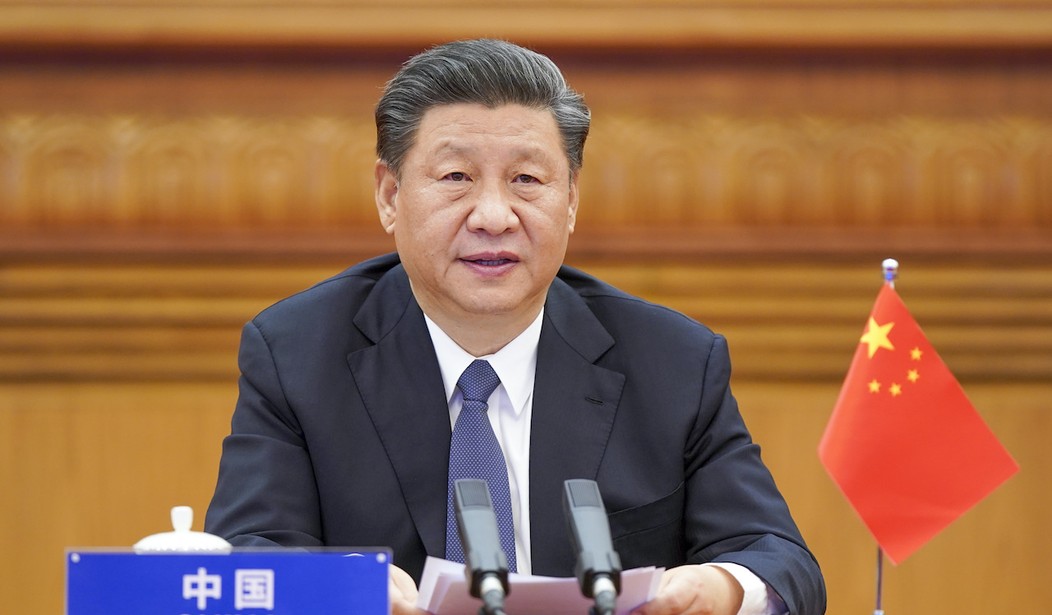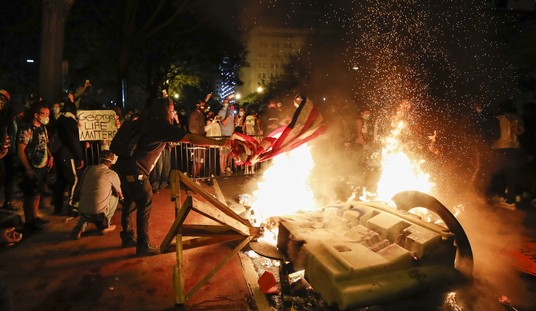The Wuhan coronavirus pandemic rightly alerted Americans to the fact that the U.S. supply chain for health care is extremely vulnerable to the very country from which pandemic originated. Another critical supply chain is dependent on China as well, and this one is vital not only for the consumer products Americans use every day but also for military tools that keep America safe — and the very “green” technologies climate activists insist everyone must transition to yesterday in order to save the planet. Yet those very same activists don’t want America to displace China as the manufacturer of these key goods — rare earth elements (REE).
According to an unsettling new study on rare earths from Power the Future, “By opposing greater U.S. production and development of REEs, green activists are fueling China’s dominance.”
Rare earths are integral components of more than 200 products, including cellular telephones, computer hard drives, electric and hybrid vehicles, flat-screen monitors, and more. The military uses them for “electronic displays, guidance systems, lasers, and radar and sonar systems.” A wide range of U.S. industries relies on rare earths, including glass, petroleum mining, steel, televisions/LED lights, medicine, and automobiles. Rare earths help reduce carbon emissions and they are necessary for batteries in hybrid electric cars.
Contrary to what the name might suggest, rare earths are actually “relatively abundant in the Earth’s crust.” What makes them “rare” is the fact that “they are not found on their own, but rather as constituent parts of larger minerals, making extraction an expensive endeavor.”
Rare earths are also essential for the green energy industry. The World Bank found that in order to meet the emissions reductions goals of the 2015 Paris Climate Agreement, the “production of minerals and metals” would need to ramp up, specifically the production of “aluminum, copper, lead, lithium, manganese, nickel, silver, steel, zinc, and rare earth elements (REEs).”
According to the International Energy Agency (IEA), renewable energy sources “generally require more minerals than fossil fuel-based counterparts.” For instance, “An electric car uses five times as much minerals as a conventional car and an onshore wind plant requires eight times as much minerals as a gas-fired plant of the same capacity. Even in fossil fuel-based technologies, achieving higher efficiency and lower emissions relies on the extensive use of minerals. For example, the most efficient coal-fired power plants require a lot more nickel than the least efficient ones in order to allow for higher combustion temperatures.”
China’s Coronavirus Lies Have Taken ‘Countless Lives,’ Bred ‘Profound Hardship.’ Trump’s Had Enough
In 2018, Vice noted that in order to meet the targets of the Paris Agreement, “global production of several rare earth minerals used in solar panels and wind turbines—especially neodymium, terbium, indium, dysprosium, and praseodymium—must grow twelvefold by 2050.” Production must grow twelvefold.
Tragically, the People’s Republic of China — yes, the country that lied about the pandemic, puts Muslims in detention camps, seized Hong Kong, and restricts its citizens’ religious freedom, among other things — enjoys a stranglehold over the production of these materials that are central to America’s economy and any hope of developing a green energy industry.
In 1992, Chinese leader Deng Xiaoping set out to dominate the rare earths industry. As Power the Future explains, “They did this by ‘strategically flooding’ the global REE market and pumping up Chinese state subsidies for favored companies. When these typical Chinese tactics were ‘coupled with lower labor costs and less stringent environmental standards,’ the rest was history, enabling ‘China’s rare-earth rise.'”
According to the Center for Strategic and International Studies, Chinese firms “control more than 85 percent of the costly processing stage of the supply chain and produced more than 70 percent of the world’s rare-earth-metal supply in 2018.” As Foreign Policy magazine explained, “the critical bottleneck for the United States, and especially the defense sector, isn’t access to rare-earth ores…it’s that the rest of the value chain— processing those ores, refining them into metals, and turning that metal into advanced products like permanent magnets—is dominated by China.”
China offered a foretaste of potential aggression with rare earths in 2010. After a Chinese fishing trawler slammed into a Japanese coast guard ship near disputed islands, China reduced REE exports to Japan, forcing the island nation to seek imports from Australia and India. Japan conducted its own research on rare earths, and by 2017, turned to Vietnam, which became the largest source of Japan’s REE imports.
The U.S. was “self-sufficient” in rare earths in the latter half of the twentieth century, and America produced “well over half of the world’s supply” until the 1980s. But China eclipsed the U.S. and the rest of the world. Between 2014 and 2017, the U.S. imported 80 percent of its supply from China.
“China’s rare earth producers, who control the lion’s share of the world’s output of the elements, said they are ready to use their dominance of the industry as a weapon in the country’s year-long trade war with their customers in the United States,” the South China Morning Post reported last year.
So why isn’t the U.S. working to ramp up the production of rare earths stat?
Last year, the Department of Commerce under President Donald Trump released a strategy to promote minerals development in the U.S., including improving access to resources on federal lands, reducing federal permitting timelines, and strengthening “America’s critical minerals supply chains and defense industrial base.”
Yet the Sierra Club attacked this commonsense first-step. The environmentalist group slammed the strategy as “dangerous” because it allegedly “puts mining companies first, before the needs of communities and workers and at the cost of some of our most important landscapes.”
Biden: Coronavirus Is a ‘Wake Up Call’ on ‘Climate Change,’ an ‘Opportunity’ for ‘Institutional Change’
The Sierra Club opposed mining rare earths in the U.S. even though the group’s executive director, Michael Brune, acknowledged last year that mining is “problematic” since much of “the world’s cobalt … currently comes from the Democratic Republic of the Congo, where so-called artisanal (or small-scale) mining is rife with pollution and human rights violations, including child labor.”
As Power the Future put it, “Instead of a practical strategy to weaken China’s dominance, end child labor, and increase environmentally protective mining in the U.S., the Sierra Club has offered only the usual pabulum about the need to protect ‘front-line communities’ from the ‘climate crisis.’ A mining ‘strategy,’ by their lights, ‘must consider the effects on our environment and respect our nation’s most iconic places, and ensure that the clean energy economy doesn’t replicate the problems of the fossil fuel economy.’
Mining is heavily regulated in the U.S., while China’s rare earths mining is largely unregulated, leaving environmental devastation. As YaleEnvironment360 reported, in Jiangxi, “Today, concrete leaching ponds and plastic-lined wastewater pools dot the hills. At one abandoned site, large wastewater ponds sit uncovered and open to the elements. Satellite images show dozens of similar pools dotting the mountains, all just one landslide or barrier failure away from a spill of their contaminated contents into waterways or groundwater.”
Even environmentalist Sen. Ed Markey (D-Mass.) admitted in 2010 that he was “troubled … that the world’s reliance on Chinese rare earth materials, in combination with China’s apparent willingness to use this reliance for leverage in wider international affairs, poses a potential threat to American economic and national security interests.”
Even so, green activists insist that mining for rare earths can be reduced over time, replaced with mineral recycling. However, recycling rates for critical metals are below one percent, with some rare earths not recycled at all.
Last year, the Chinese official Communist Party paper, the People’s Daily, highlighted America’s “uncomfortable” dependence on China for rare earths. “Will rare earths become a counter weapon for China to hit back against the pressure the United States has put on for no reason at all? The answer is no mystery.”
As the People’s Republic of China flexes its muscles around the globe, and green groups in the U.S. oppose rare earths production in America, the Trump administration must prioritize securing the REE supply chain.
Republicans should also challenge Democrats and green activists on this issue. Given China’s horrific record on health, human rights, and trade; given the fact that American mining methods are so much safer; and given that any plan to meet the demands of the Paris Agreement requires a twelvefold increase in REE production, how could anyone possibly oppose ramping up rare earths production in the U.S.? If Alexandria Ocasio-Cortez wanted to make the Green New Deal more possible, this would be the first step she would take.
Tyler O’Neil is the author of Making Hate Pay: The Corruption of the Southern Poverty Law Center. Follow him on Twitter at @Tyler2ONeil.









Join the conversation as a VIP Member